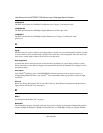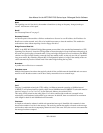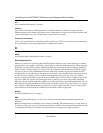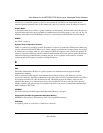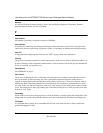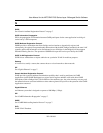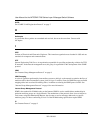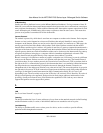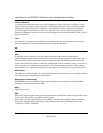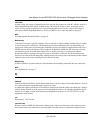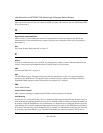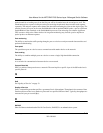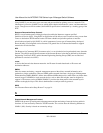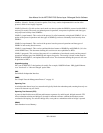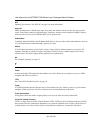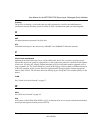
User Manual for the NETGEAR 7200 Series Layer 2 Managed Switch Software
B-10 Glossary
202-10010-01
Local Area Network
A communications network serving users within a limited area, such as one floor of a building. A LAN
typically connects multiple personal computers and shared network devices such as storage and printers.
Although many technologies exist to implement a LAN, Ethernet is the most common for connecting
personal computers and is limited to a distance of 1,500 feet. LANs can be connected together, but if
modems and telephones connect two or more LANs, the larger network constitutes what is called a WAN or
Wide Area Network.
Loop
An event that occurs when two network devices are connected by more than one path, thereby causing
packets to repeatedly cycle around the network and not reach their destination.
M
MAC
(1) Medium Access Control. In LANs, the sublayer of the data link control layer that supports
medium-dependent functions and uses the services of the physical layer to provide services to the logical
link control (LLC) sublayer. The MAC sublayer includes the method of determining when a device has
access to the transmission medium. (2) Message Authentication Code. In computer security, a value that is a
part of a message or accompanies a message and is used to determine that the contents, origin, author, or
other attributes of all or part of the message are as they appear to be. (IBM Glossary of Computing Terms)
MAC address
The Media Access Control address is a unique 48-bit hardware address assigned to every network interface
card. Usually written in the form 01:23:45:67:89:ab.
Management Information Base
When SNMP devices send SNMP messages to the management console (the device managing SNMP
messages), it stores information in the MIB.
Mbps
Megabits per second.
MD5
MD5 creates digital signatures using a one-way hash function, meaning that it takes a message and converts
it into a fixed string of digits, also called a message digest.
When using a one-way hash function, one can compare a calculated message digest against the message
digest that is decrypted with a public key to verify that the message hasn't been tampered with. This
comparison is called a "hashcheck."



